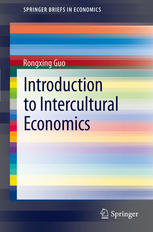

Most ebook files are in PDF format, so you can easily read them using various software such as Foxit Reader or directly on the Google Chrome browser.
Some ebook files are released by publishers in other formats such as .awz, .mobi, .epub, .fb2, etc. You may need to install specific software to read these formats on mobile/PC, such as Calibre.
Please read the tutorial at this link: https://ebookbell.com/faq
We offer FREE conversion to the popular formats you request; however, this may take some time. Therefore, right after payment, please email us, and we will try to provide the service as quickly as possible.
For some exceptional file formats or broken links (if any), please refrain from opening any disputes. Instead, email us first, and we will try to assist within a maximum of 6 hours.
EbookBell Team

5.0
88 reviewsThis book presents a methodological framework for the analysis of intercultural issues frequently misinterpreted by existing theories. It uses a challenge-and-response theory of cultural development to examine the relationship between different natural disasters and threats and the developments of ancient civilizations. The spatial interaction of ancient civilizations is assessed; and four non-linear patterns of intercultural dynamics are presented. Our empirical analyses of the four major ancient civilizations (the Mesopotamian, the Egyptian, the Indus, and the Chinese) focus on intercultural influences as well as how they have shaped the spatial dynamics of the world as a whole.
This book also examines various aspects of intercultural economic influences, such as those of culture on international trade. Evidence from a broad panel of nations supports the presumption that high-income trade partners will be less sensitive to the measures of cultural dissimilarity than low-income trade partners between which cultural dissimilarity leads to barriers to international trade. The treatment of linguistic and religious factors as continuous variables in this book has improved past studies in which ‘language’ was treated as one or more dummy variables and ‘religion’ was ignored.